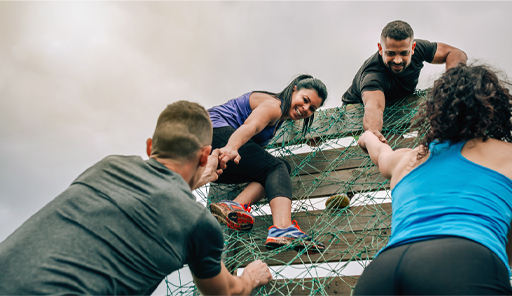8 Managing athletes and active females experiencing RED-S
To manage RED-S in athletes it is necessary to address three things – increasing energy intake, reducing training load and allowing adequate recovery time (Scarr, 2019). However, putting interventions in place is harder than it sounds. The athlete will have to be central to the process and be willing and able to change. The coach and fellow athletes can be important when having conversations with the athlete and supporting them.
However, it is likely that professional help will be needed as well. This may be from a doctor or GP who can advise them and ask for blood tests to identify how much damage has occurred to the bones and hormone levels, but more often than not will require input from a sports physician (doctor), a sports nutritionist, and a sport psychologist. Using a team approach to manage RED-S is discussed in Activity 3.
Activity 3 Developing a team approach
Listen to the audio clip where Dr Kate Ackerman, a researcher in RED-S, explains an approach to manage RED-S.
Then answer the following question:
- What is Dr Ackerman’s top tip for addressing low energy availability?
Clinical tips from Dr. Kathryn Ackerman on how to manage athletes with low energy availability in BJSM (soundcloud.com) [Tip: hold Ctrl and click a link to open it in a new tab. (Hide tip)] : listen from 09:00 (‘Can you give us some of your tips …’) to 10:26 (‘… to make them a better athlete’).
Discussion
Dr Ackerman emphasises the importance of developing a team approach as it is unlikely that a coach will have all the expertise the athlete needs. In particular the team should include a sports nutritionist or dietician and a sport psychologist. The sports nutritionist to advise on how to get sufficient calories back into the body to match how many calories the athlete is using up and the sport psychologist to support them with psychological techniques and manage any stress or anxiety.
Dr Ackerman also stressed it is important to emphasise how lucky the athlete is to have all this support around them to help them become healthy again and back playing the sport they love. This support can include family, friends and fellow athletes as well as the professionals helping them.

